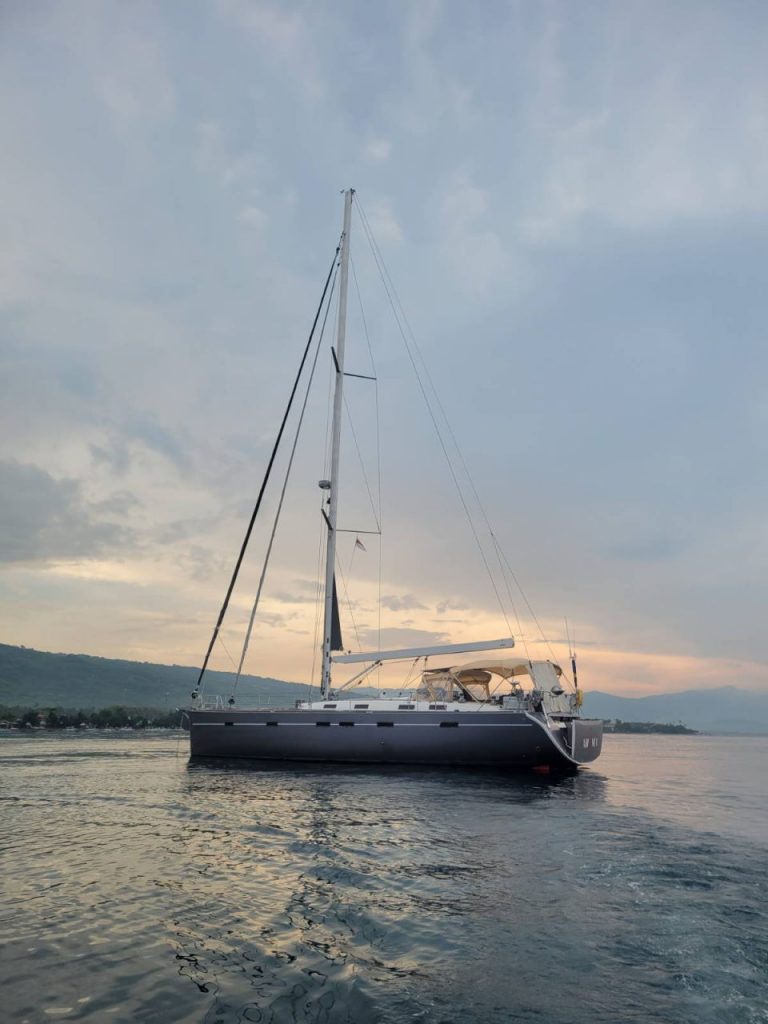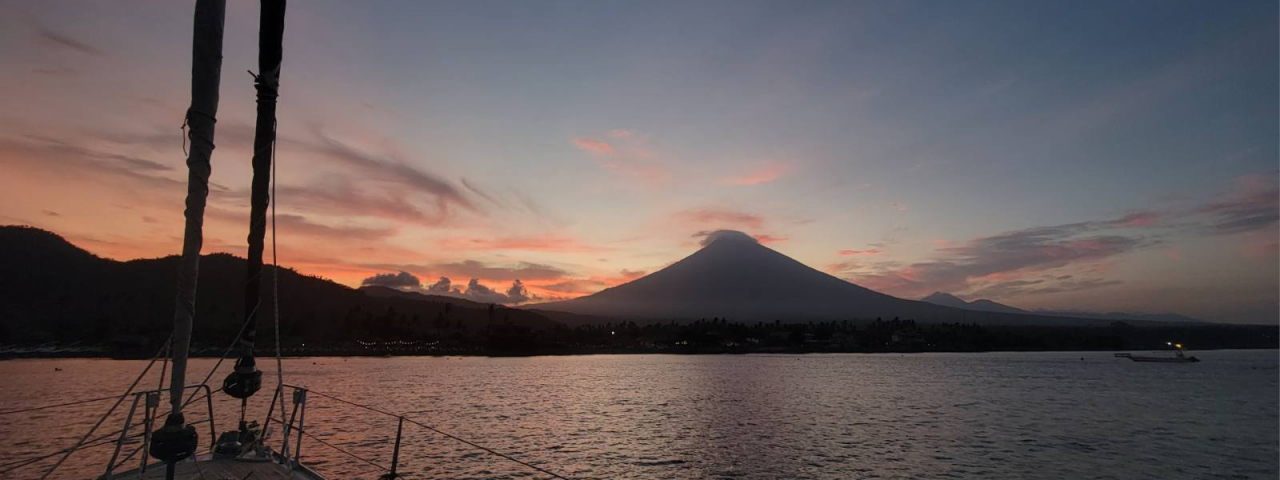Crossing over the Bali sea was less eventful that expected. I was prepared for a fleet of spider boats and other fishing vessels to stand between us and the exit between Pulau Karimunjawa and the peninsula of Surabaya, approximately 400 miles North West. But non of the feared vessels where anywhere to be found. All we encountered was the occasional cargo ship or passenger ferry well marked on the AIS system.
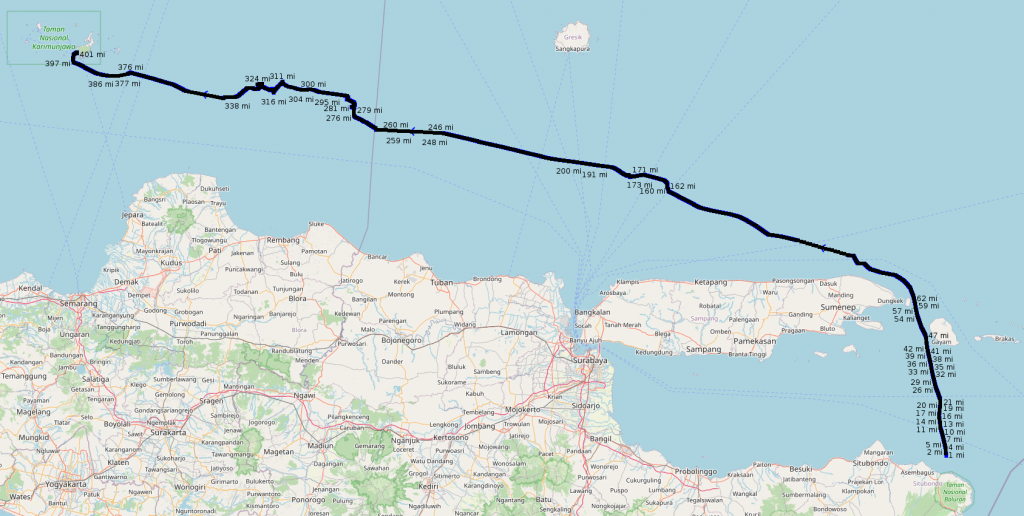
On the 6th of January we left the the shade of mount Belarut at the bay of Lemut at sunrise. The early departure left us far into the Java sea by sunset. We negotiated a couple of Cargo vessels to get about 40 miles off shore, save from the dreaded fishing floaties and small unmarked fishing boats.
The thunderstorms at sunset were ominous but stayed many miles removed from our 20 meter aluminum stick. And as we motored slowly into the night we started the fist night watch with the new crew. I miss my old crew, with whom I spent many months trekking through Indonesia. If the new crew will be fifty percent as good as the previous I can count myself lucky.
I spent most of the night up top helping Linda dodge cargo vessels and larger fishing boats. In the the morning we were negotiating the Poleng oil fields in front of Surabaya. The charts marked it as a restricted area, so as law abiding sailors we navigated to pass at the most northern tip early in the morning. I was knackered, but rain and little wind welcomed us, so we could finally do some sailing. It didn’t last long though, and soon we were back on diesel wind. The day remained a wish wash between rain and drizzle with little to no wind.
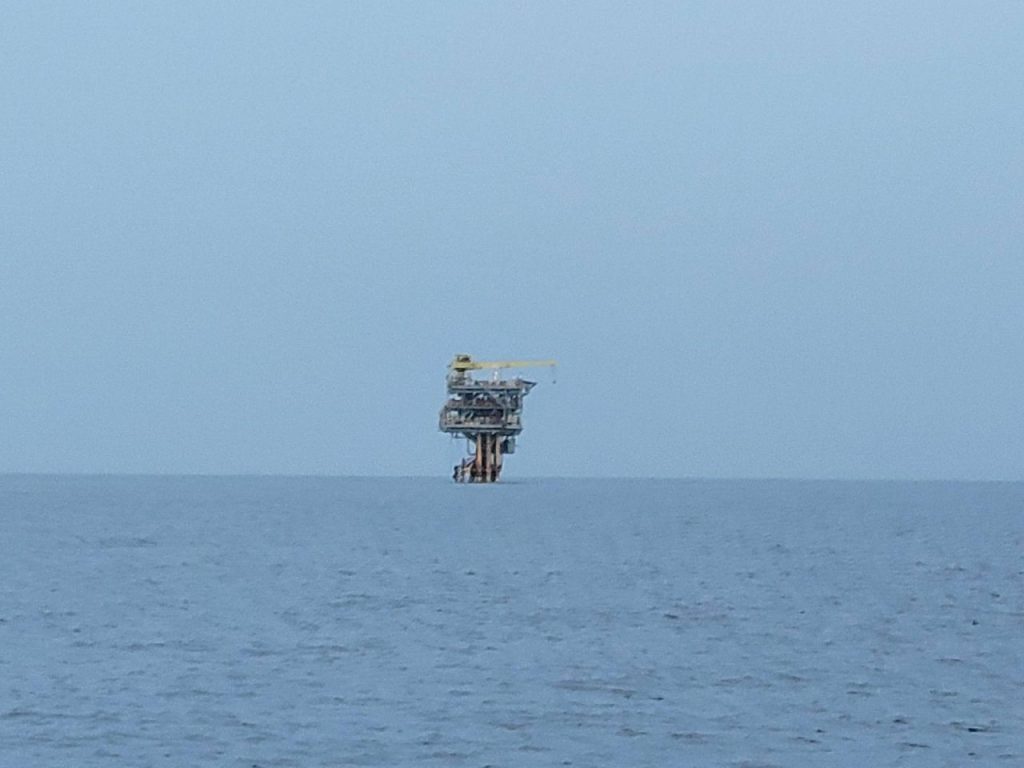
So we motored into the second night, during which I did get some sleep. My watch started at 2am, sailing Ah Ma into the sunrise. The best time of day to be alone up top. I had a few moments of good sailing, threading between two rain storms in 15 to 17 knots of wind up on the nose. But the sea was as flat as the pacific, so no excessive banging and flapping about on this point of sail this morning. Unfortunately the finicky winds took us of our planned course. But that is sailing, point the nose of the boat into the direction you did not plan to go.
In the morning light I discovered that the engine was running quite hot and was blowing a bit too much white smoke. Not good, not good at all. We stopped the engine to let it cool down, I did a routine check of oil, water pipes and replaced the fuel filter which was quite murky. We also decided to top up the tank as we burned through roughly 180 liters of diesel in the past couple of days. We definitely need to refill on the next stop.
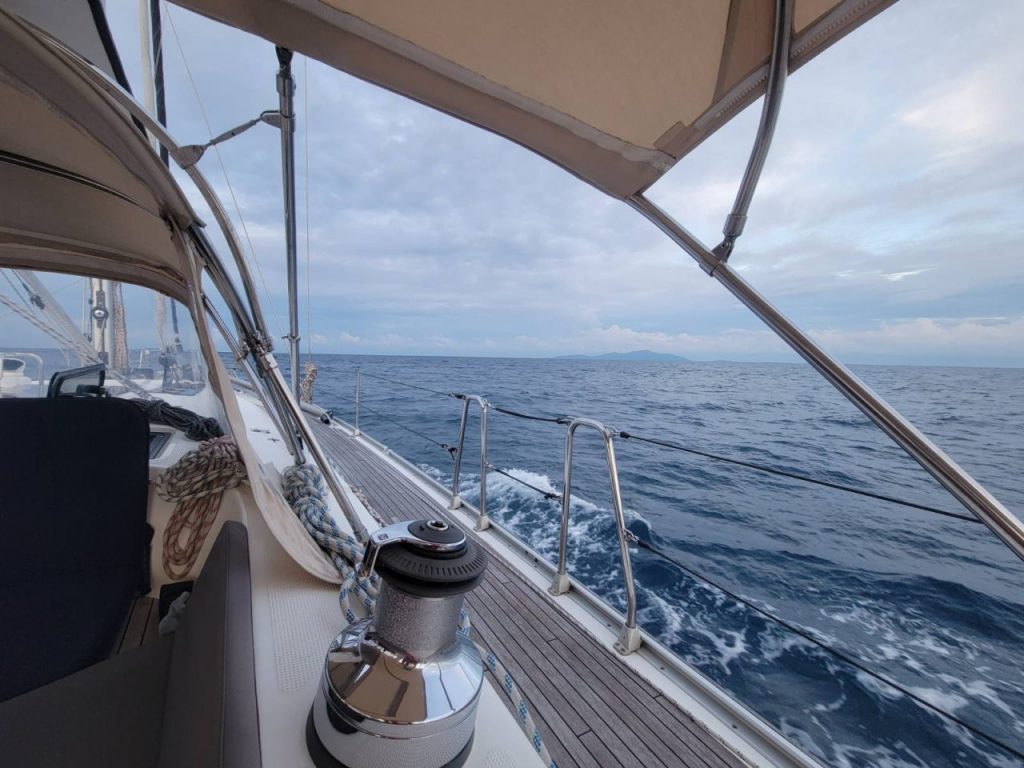
All of this didn’t help much, the engine was still running on an abnormal 87 degrees Celsius. But as suddenly as the issues started so did they went away, after half an hour of careful motoring and monitoring the temperature suddenly dropped back to 83/84 degrees, which is about the normal operating temperature for our Penta.
Late in the afternoon we finally got a little bit of breeze, of course straight from the point we were heading to, but still such a relief to turn off the engine and sail for a bit, finally. That evening around dinner time we decided to turn the engine back on as the wind has dropped again. The overheating issues on the Penta were back! Accompanied by white smoke coming out of the exhaust. We went back to slowly sailing. Rose kept Ah Ma on track as best she could, and Linda and I dove below to investigate the issue.
We checked and cleaned the raw water strainer, but unfortunately those easy fixes didn’t solve the issue. There was only one thing left to do, the dreaded impeller. This sits inside the seawater pump and is mounted in such a way the replacing the impeller with the pump in place is just impossible. Well done Volvo, very practical. So to replace the impeller I first need to remove the drive belt, then a couple of water hoses, and then finally the pump itself is freed up for removal. All this at open sea with the boat rocking about.
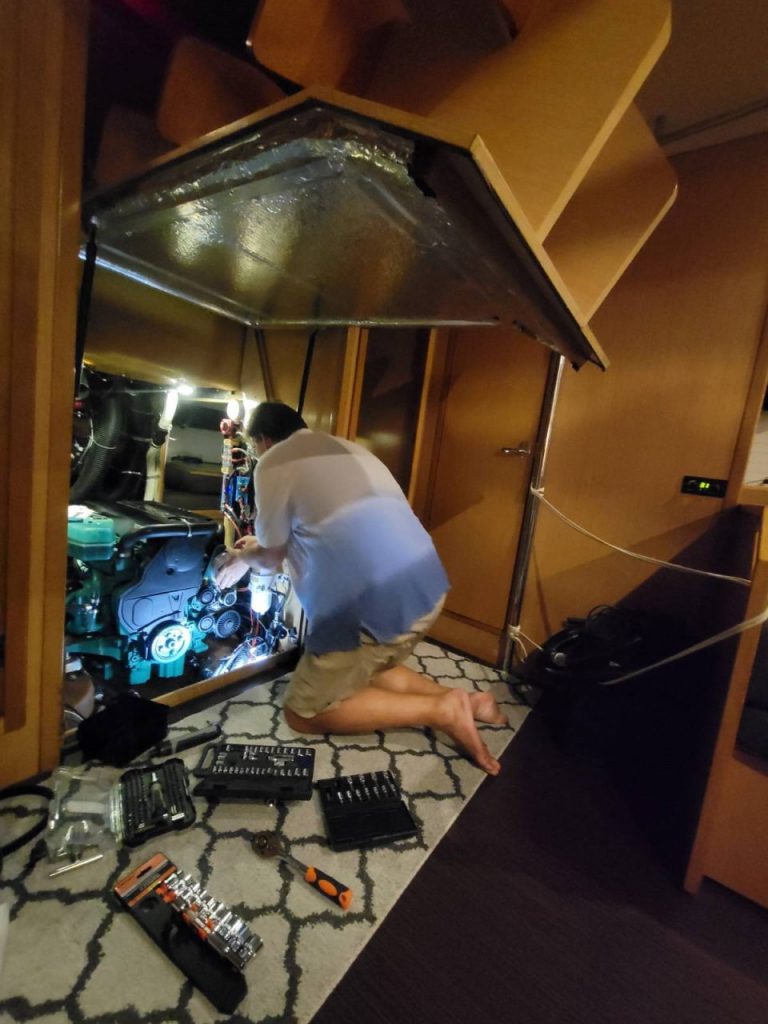
Removing the pump and replacing the actual impeller is actually the easy part. After replacing the impeller it all needs to be put back together, and watertight. Of course this process is accompanied by a lot of colorful language. After about four hours of mucking around, just before midnight, we gave the engine a go. A big gush of water exited the exhaust and temperatures remained around a balmy 81 degrees. The noise of the purring Penta filled the night and we continued our way dodging huge cargo vessels and tiny unlit fishing boats alike.
The engine issues of last night caused us to arrive at Karimunjawa early in the afternoon of the 9th of January. The bay looked calm but was littered with reefs and rocks. We carefully navigated to marked anchoring spot and dropped the hook. Alas, too shallow to my liking, the back of the boat was hanging over a beautiful coral garden, but no more than 2.5 to 3 meters deep. So we pulled up the anchor to settle a little bit further from the reef.
Still not to my liking, as the deep water and lee shore gave me an unbecoming feeling. Again we pulled up the anchor.. well we tried to. It was stuck to the bottom, really really stuck. I tried to pull it with the boat by circling around in and pulling it from the opposite direction, no success. Well at least we did not need to worry about the anchor dragging, but we had to get free of course.
Linda jumped on her phone and within 5 minutes she was talking to Ferry and Perry, two friendly guys from a dive shop who didn’t mind making some extra money. As promised around an hour later he and his buddy arrived on their dive boat.
We watched their bubbles from the bow as they worked their way along the chain. After 45 minutes of anxiously waiting, we saw both divers surface with an OK sign. As Rose and Linda winched up the anchor I followed the instructions of the divers to slowly motor along the path of the laid chain.
After two attempts we were free, the rock solid 50kg Rockna sat proudly on the bow again. I followed the dive boat to a spot a couple of hundred meters further. This spot, they assured, had no rocks or other obstacles.We dropped 80 meters of chain in 22 meters of water and immediately had a solid holding. This would be our home for the next couple of days. A good 5 minute dinghy ride from shore, in the middle of the bay.
We thanked the divers with some Coca Cola and US dollars and heard their stories from below. It was quite a mess Ferry told us. So bad even that upon witnessing the situation below, his buddy Perry made the ‘no way’ sign and wanted to leave it. Ferry was more persistent and together they managed to free up the chain from underneath a rock that we had split in half with our anchor.
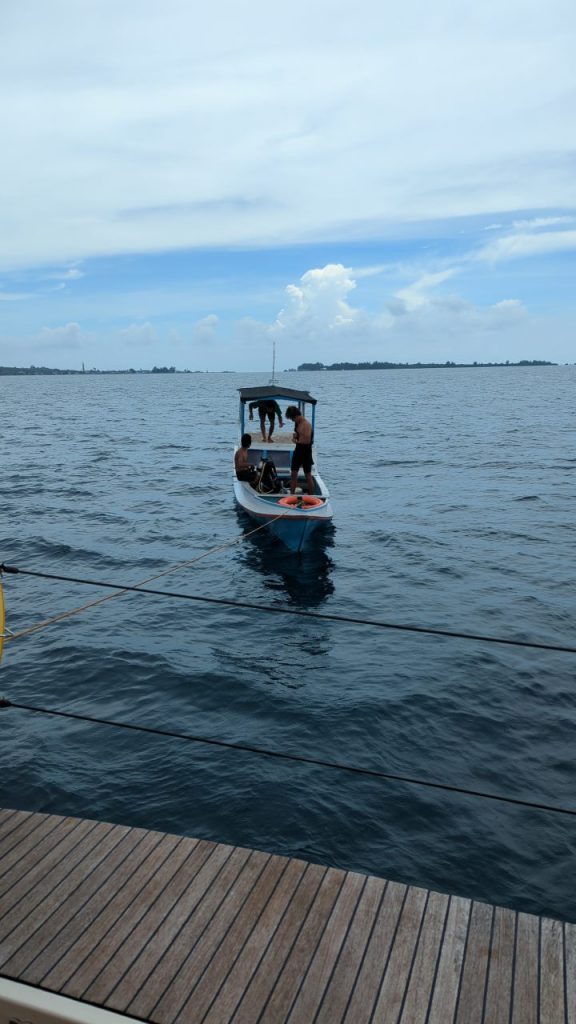
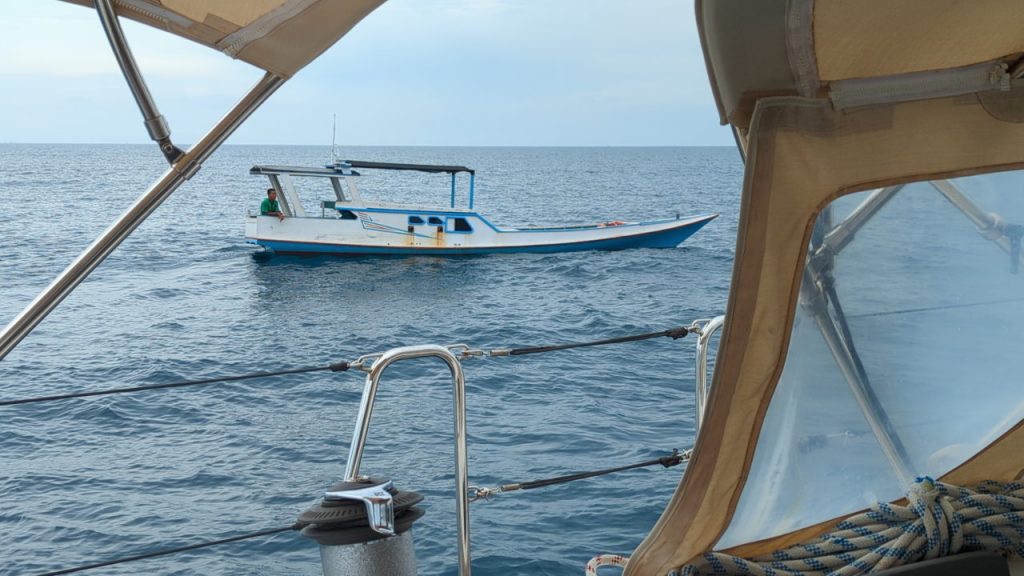
Kuramanjawa turned out to be a pleasant anchorage despite the troubles of securing the boat to the bottom and being in the wrong monsoon season for currents and swells. They first couple of days we bay was flat calm. But upon the day of our departure the swells and winds had picked up. Still the boat was holding nicely with her nose in the wind and waves, sitting relatively calm in the twirly waters.
